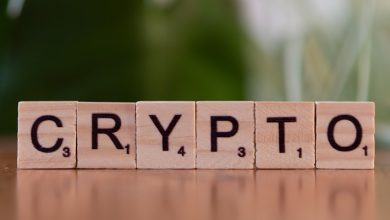What is a Dusting Attack? How to Protect Yourself

- Understanding Dusting Attacks and Their Purpose
- Identifying the Signs of a Dusting Attack on Your Cryptocurrency Wallet
- Common Techniques Used in Dusting Attacks and How They Work
- Why Dusting Attacks Pose a Threat to Your Privacy and Security
- Steps to Take to Safeguard Your Cryptocurrency Against Dusting Attacks
- Best Practices for Detecting and Preventing Dusting Attacks on Your Wallet
Understanding Dusting Attacks and Their Purpose
A dusting attack is a malicious activity where small amounts of cryptocurrency are sent to numerous addresses in order to de-anonymize the wallet holders. The purpose of these attacks is to track the movement of funds and potentially link different addresses to the same individual or entity. This information can then be used for various nefarious purposes, such as phishing scams, hacking attempts, or even surveillance.
Identifying the Signs of a Dusting Attack on Your Cryptocurrency Wallet
One way to protect yourself against dusting attacks is by identifying the signs that your cryptocurrency wallet may have been targeted. Here are some common indicators to look out for:
- Unexplained small amounts of cryptocurrency appearing in your wallet
- Receiving multiple tiny transactions with strange decimal amounts
- Unexpected increases in the number of inputs in your transactions
- Seeing transactions that you did not initiate
If you notice any of these signs, it is crucial to take immediate action to secure your cryptocurrency funds. Dusting attacks can be a precursor to more malicious activities, so staying vigilant and proactive is key to protecting your assets.
Common Techniques Used in Dusting Attacks and How They Work
There are several common techniques used in dusting attacks that cybercriminals employ to compromise the privacy and security of cryptocurrency users. These techniques include address reuse, blockchain analysis, phishing attacks, and malware.
Address reuse is when the same cryptocurrency address is used multiple times for transactions, making it easier for attackers to link different transactions to the same user. Blockchain analysis involves tracking transactions on the blockchain to identify patterns and potentially de-anonymize users.
Phishing attacks are another common technique used in dusting attacks, where attackers send deceptive emails or messages to trick users into revealing their private keys or other sensitive information. Malware, such as keyloggers or screen scrapers, can also be used to steal cryptocurrency funds.
By understanding these common techniques used in dusting attacks, cryptocurrency users can take steps to protect themselves and their assets. This includes using unique addresses for each transaction, being cautious of suspicious emails or messages, and regularly updating antivirus software to guard against malware.
Why Dusting Attacks Pose a Threat to Your Privacy and Security
Many people are unaware of the potential dangers posed by dusting attacks. These attacks involve sending tiny amounts of cryptocurrency or digital assets to a large number of addresses. While the amounts are usually so small that they go unnoticed, they can be used by hackers to track and potentially compromise your privacy and security.
Dusting attacks are often used as a way to gather information about the activity and ownership of addresses. By sending out these small amounts, attackers can determine which addresses are active and potentially link them to real-world identities. This information can then be used in more targeted attacks, such as phishing scams or account takeovers.
One of the biggest threats posed by dusting attacks is the potential loss of privacy. If attackers are able to link your cryptocurrency address to your identity, they can track your transactions and potentially monitor your financial activities. This can lead to a loss of anonymity and put you at risk of targeted attacks or scams.
Furthermore, dusting attacks can also pose a security risk. While the small amounts of cryptocurrency sent in these attacks may seem insignificant, they can be used to exploit vulnerabilities in wallets or exchanges. Attackers can use this information to potentially gain access to your funds or compromise your accounts.
Steps to Take to Safeguard Your Cryptocurrency Against Dusting Attacks
To safeguard your cryptocurrency against dusting attacks, there are several steps you can take to protect yourself and your funds. Here are some recommended measures to enhance your security:
- Regularly monitor your cryptocurrency transactions and addresses to detect any suspicious activity.
- Avoid clicking on unknown links or downloading attachments from untrusted sources, as these could potentially lead to a dusting attack.
- Consider using a separate wallet for receiving funds and another for making transactions to minimize the risk of exposing all your funds at once.
- Use a VPN when accessing your cryptocurrency accounts to add an extra layer of security and protect your identity.
- Enable two-factor authentication on all your accounts to prevent unauthorized access and ensure only you can authorize transactions.
By following these steps and remaining vigilant, you can significantly reduce the likelihood of falling victim to a dusting attack and protect your cryptocurrency investments from potential threats.
Best Practices for Detecting and Preventing Dusting Attacks on Your Wallet
It is crucial to implement best practices when it comes to detecting and preventing dusting attacks on your wallet. These attacks can be harmful and compromise the security of your funds, so taking proactive measures is essential.
- Regularly monitor your transactions and be on the lookout for small, suspicious amounts of cryptocurrency being sent to your wallet. These could be a sign of a dusting attack.
- Consider using a separate wallet for receiving funds to help isolate any potential dusting attacks from your main wallet.
- Be cautious of unsolicited or unknown sources sending you cryptocurrency, as this could be a tactic used in dusting attacks.
- Keep your wallet software up to date with the latest security patches and updates to minimize vulnerabilities that could be exploited in a dusting attack.
- If you suspect that you have been targeted in a dusting attack, consider contacting your wallet provider or a cybersecurity expert for assistance in mitigating the threat.



